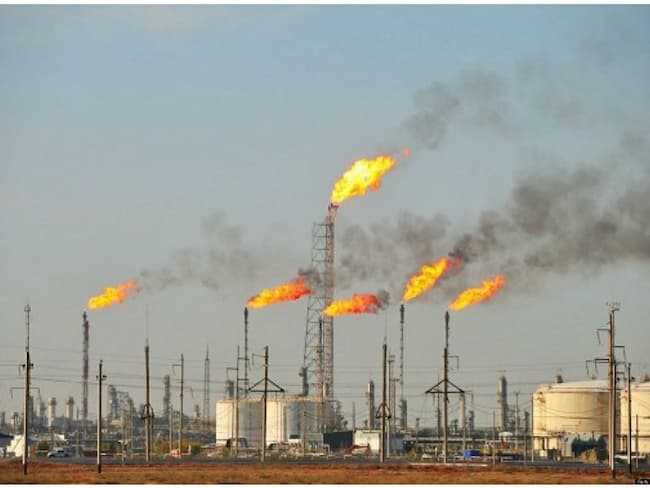Oil and gas firms operating in Nigeria are expected to pay $52.12 million (N19.75 billion) fine for gas flared in January and February this year.
Analyses of Nigerian National Petroleum Corporation (NNPC) data on gas production by BizWatch Nigeria on Monday showed that a total of 26.06 billion standard cubic feet of natural gas was flared in January and February 2021.
This is despite the plans and strategies deployed by the Nigerian government to put an end to the wasteful gas flaring practice in 2020.
The data showed that in January 13.04 billion scf was flared while 13.02 billion scf was flared in February.
The Federal Government in its revised 2018 gas flare regulation imposed a penalty of $2.00 per million standard cubic feet (MMSCF) of gas flared.
Therefore, for 26.06 billion scf gas flared in the two months under review, the oil and gas firms are expected to pay a fine of $52.12 million or N19.75 billion.
READ ALSO: FG Says Funding For Port Harcourt Refinery Rehabilitation Won’t All Be Borrowed
Nigeria has long been a global hotspot for gas flaring, with successive government administrations reiterating their commitment to cleaning up the industry.
Despite warnings and deadlines by the Federal Government to oil companies to stop gas flaring, the practice still continues.
The international community had also joined in calls for the stoppage of gas flaring due to its negative impact to the environment.
In 2020, the government disclosed plans to tackle the issue and raise new revenue from wasted natural gas. This led to the revised gas flaring penalties.
How Much Nigeria Lost To Gas Flaring
Further analyses of the data obtained from NNPC showed that the Nigerian government and other investors lost $66.97 million to gas flaring in the two months under review.
With the price of natural gas put at $2.57 per 1,000scf as of Monday, the 26.06 billion scf flared in January and February translates to an estimated loss of $66.97million or N25.38billion (using the official exchange rate of N379/dollar).
According to World Bank data, Nigeria is the seventh-largest gas flaring country in the world with almost 8 billion cubic meters of gas flared annually.
READ ALSO: IEA Doubts Nigeria’s Ability To Revive Refineries
The wastage of this valuable resource that Nigeria sorely needs to fuel its development and generate electricity translates of to burning cash, as well as environmental degradation and hazards it causes.
Plans To Commercialize Gas Flaring
In 2020, the government devised a concerted effort to tackle gas flaring and raise new revenue from wasted natural gas.
As such, the Federal Government in February 2020 launched the first phase of the Nigerian Gas Flare Commercialization Programme (NGFCP), having shortlisted 200 bidding companies following the evaluation of statements of qualification.
The NGFCP is a key component of the National Gas Policy, which sought to end gas flaring, create an enabling environment for investors, seek value addition for gas and improve governance in the sector.
The Department of Petroleum Resources (DPR) declared that 45 gas flare sites would be put up for auction in the first phase of the NGFCP.
However, the DPR announced in June 2020 that the NGFCP is being delayed by six weeks due to COVID-19 related travel restrictions, thus limiting the involved stakeholder’s ability to access flare points.
The first phase of the programme is expected to resume once travel restrictions lighten.
If successful, the policy’s potential GDP impact is estimated at approximately $1 billion per annum. Assuming average project sizes in the range of $10-40 million, the NGFCP has a potential of triggering around 70 to 89 projects.
Also, within one to two years, the NGFCP is estimated to generate about 300,000 direct and indirect jobs.













